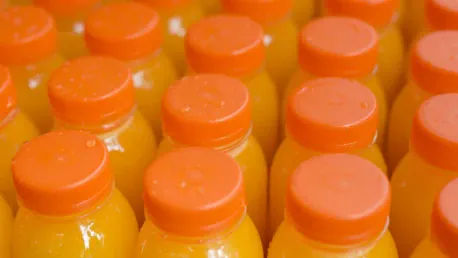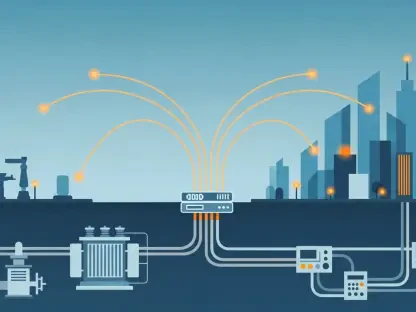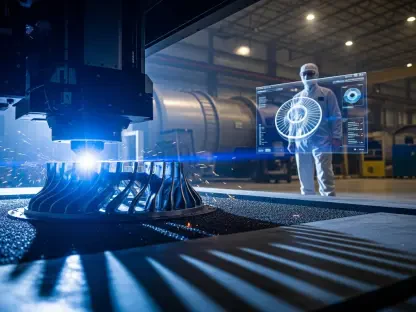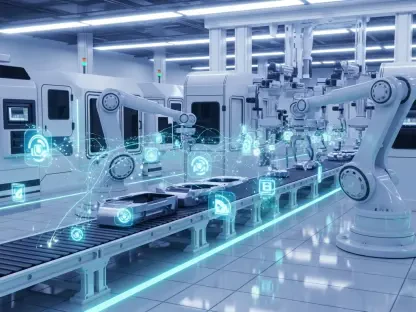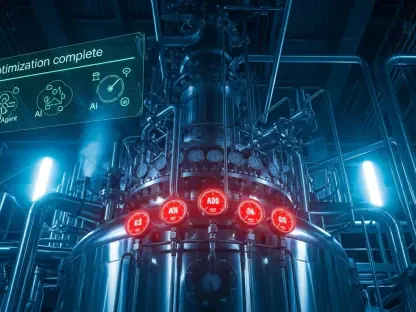The evolving landscape of sustainability within the food and drink packaging industry is driven by increasing regulatory pressures and a growing commitment to environmental responsibility. Manufacturers are now compelled to enhance the sustainability of their packaging from production to post-consumer disposal. This article explores various strategies and case studies that illustrate the industry’s response to these pressures, highlighting the critical role of measurement, the shift towards recycled materials, technological innovations, and the importance of tracking packaging post-use.
The Importance of Measuring and Monitoring Sustainability Impacts
Effective measurement tools are integral to tracking progress and identifying areas for improvement in sustainability efforts. Companies like Pilgrim’s Europe are at the forefront of this approach, utilizing innovative software such as Gabi to compare the CO2 impacts of various packaging materials. This data-driven approach enables them to make informed decisions that help reduce their carbon footprint.
Precise data allows companies to objectively determine the best paths forward, balancing business interests with environmental goals. By leveraging accurate measurements, manufacturers can set realistic targets and track their progress over time, ensuring continuous improvement in their sustainability practices. Gabi and similar software illustrate how digital tools can pinpoint the exact environmental impacts of each packaging choice, transforming complex sustainability goals into actionable steps. This methodology not only refines operations but also provides transparency to stakeholders, fostering trust and commitment towards a greener future.
Increasing the Use of Recycled Materials
One of the key trends in the industry is the shift towards using more recycled materials in packaging. Pilgrim’s Europe’s “Tray-to-tray” trial is a prime example of this initiative. This cross-industry collaboration focuses on converting recycled plastics from UK households into food-grade ready-meal trays, demonstrating significant advancements in creating a closed-loop solution. Such industry-wide endeavors highlight a growing acknowledgment that the sustainability of packaging materials goes beyond mere recycling; it involves reintegrating post-consumer waste into the production cycle in effective ways.
The trial has successfully packed 120,000 meals in trays consisting of 73% recycled content, with half of this material sourced from the UK. This initiative highlights that recycled PET can meet the technical demands of dual ovenable food-grade packaging while promoting resource efficiency and moving towards a circular economy. By showcasing practical applications of recycled materials, Pilgrim’s Europe sets an example of how other manufacturers can follow suit. It underscores the potential for recycled plastics not only to meet safety and quality standards but also to redefine the traditional paradigms of production and supply chains.
Technological Innovations and Novel Materials
Technological innovations play a crucial role in advancing sustainability in packaging. Companies like Polytag are utilizing technology to capture real-time data on where plastic waste ends up. By partnering with major brands, Polytag’s Ecotrace Program uses invisible watermarks and detection technology at Material Recovery Facilities (MRFs) to trace the lifecycle of packaging. This innovative approach merges cutting-edge technology with environmental accountability, providing unprecedented insights that drive tangible improvements.
This data is essential for setting targets and improving recycling rates, supporting the shift toward a circular economy. The partnership with Re-Gen, which processes a significant portion of Northern Ireland’s household waste, demonstrates Polytag’s scalability and impact in driving industry-wide change. Being able to trace materials through their entire lifecycle not only sets a precedent for accountability but also bridges the gap between production and disposal. By integrating invisible markers and real-time detection, the entire process becomes transparent, making it easier for companies to optimize packaging design and enhance their recycling infrastructure.
Practical Implementation of Novel Materials
A critical concern for manufacturers is whether novel packaging materials can be implemented on existing production lines without incurring exorbitant costs. Conversion costs can vary, but using current machinery for both plastic and new materials like paper or Bagasse can be more cost-effective. This raises a practical question about how manufacturers can transition to sustainable practices without overwhelming financial investments, which is where innovative yet adaptable solutions come into play.
Chrisp from Multivac UK explains that the cost of changing to new machines can be offset by the significant reduction in packaging costs when switching from plastic to paper. Innovations such as Bagasse materials, which can be used with existing packaging equipment, show promise despite needing some plastic content for practicality. By strategically integrating new materials that complement existing infrastructure, manufacturers can achieve a balance that meets ecological goals without compromising economic viability. These hybrid solutions represent a pragmatic approach, addressing both environmental needs and operational capabilities within the industry.
Reducing Overall Packaging Material
Reducing the amount of packaging material produced is another significant strategy highlighted in the industry. For instance, Australian Vintage’s McGuigan Wines brand has shifted to a 300g glass bottle from the traditional 400g, incorporating 30% recycled glass. This 25% reduction in glass weight is projected to save approximately 336,000 kg of CO2 emissions annually during production. This move signifies how minimal adjustments in material usage can yield substantial ecological benefits.
This switch exemplifies how less material usage can lead to substantial environmental benefits while maintaining product quality. By focusing on lightweighting and other strategies, manufacturers can achieve significant reductions in their environmental impact. Reducing material usage not only cuts down on resource consumption but also optimizes transportation and storage efficiency, further decreasing the carbon footprint associated with packaging. Such strategies promote a holistic approach to sustainability, where every aspect from production to distribution is refined for minimal environmental harm.
Tracking and Tracing Packaging Post-Use
Tracking where packaging ends up post-use is vital for enhancing recycling rates and moving towards a circular economy. Polytag’s technology captures real-time data on plastic waste, enabling companies to trace the lifecycle of their packaging. This information is crucial for setting targets and improving recycling rates, addressing one of the most complex challenges in sustainability: ensuring that used materials re-enter the production cycle efficiently.
The partnership with Re-Gen, which processes a significant portion of Northern Ireland’s household waste, demonstrates the scalability and impact of such initiatives. By leveraging technology to track and trace packaging, manufacturers can make informed decisions that support sustainability goals and regulatory compliance. This real-time tracing ensures that waste management processes are transparent and efficient, fostering a culture of accountability and continuous improvement within the industry. The successful application and scalability of such technologies pave the way for broader adoption across various sectors, reinforcing the imperative to track and manage packaging waste comprehensively.
Collaborative Efforts and Industry-Wide Change
The importance of collaborative efforts in driving industry-wide change cannot be overstated. Initiatives like Pilgrim’s Europe’s “Tray-to-tray” trial and Polytag’s Ecotrace Program highlight the power of cross-industry collaboration in achieving sustainability goals. By pooling resources, knowledge, and expertise, companies can tackle common challenges more effectively, setting a new standard for environmental stewardship within the packaging sector.
By working together, companies can share best practices, pool resources, and drive innovation, ultimately leading to more sustainable packaging solutions. These collaborative efforts are essential for meeting evolving regulatory requirements and reducing the environmental impact of packaging. This collective approach fosters a sense of shared responsibility, motivating stakeholders to contribute actively towards a more sustainable future. Through collaboration, the industry can innovate faster, implement more effective strategies, and move towards a common goal of reducing overall environmental impact.
Balancing Financial and Operational Feasibility
The food and drink packaging industry’s approach to sustainability is continually evolving due to increasing regulatory demands and a growing dedication to environmental stewardship. These pressures are pushing manufacturers to significantly improve the sustainability of their packaging, considering every stage from production to post-consumer disposal.
In this article, we delve into various strategies and real-world examples demonstrating how the industry is responding to these challenges. One critical strategy is the precise measurement of environmental impact, which helps in making informed decisions. Furthermore, there’s a notable shift towards using recycled materials, which reduces reliance on virgin resources and minimizes waste. Technological innovations are also making significant contributions, introducing advanced materials and processes that enhance the sustainability of packaging. Tracking packaging post-use is another essential aspect, as it provides valuable data to optimize recycling and reduce environmental impact.
Overall, the industry’s commitment to these sustainability measures is vital, not only due to regulatory pressures but also because of the increasing consumer demand for eco-friendly products. As the industry continues to adapt and innovate, the collective efforts of manufacturers, regulators, and consumers will play a crucial role in shaping a more sustainable future for packaging.
